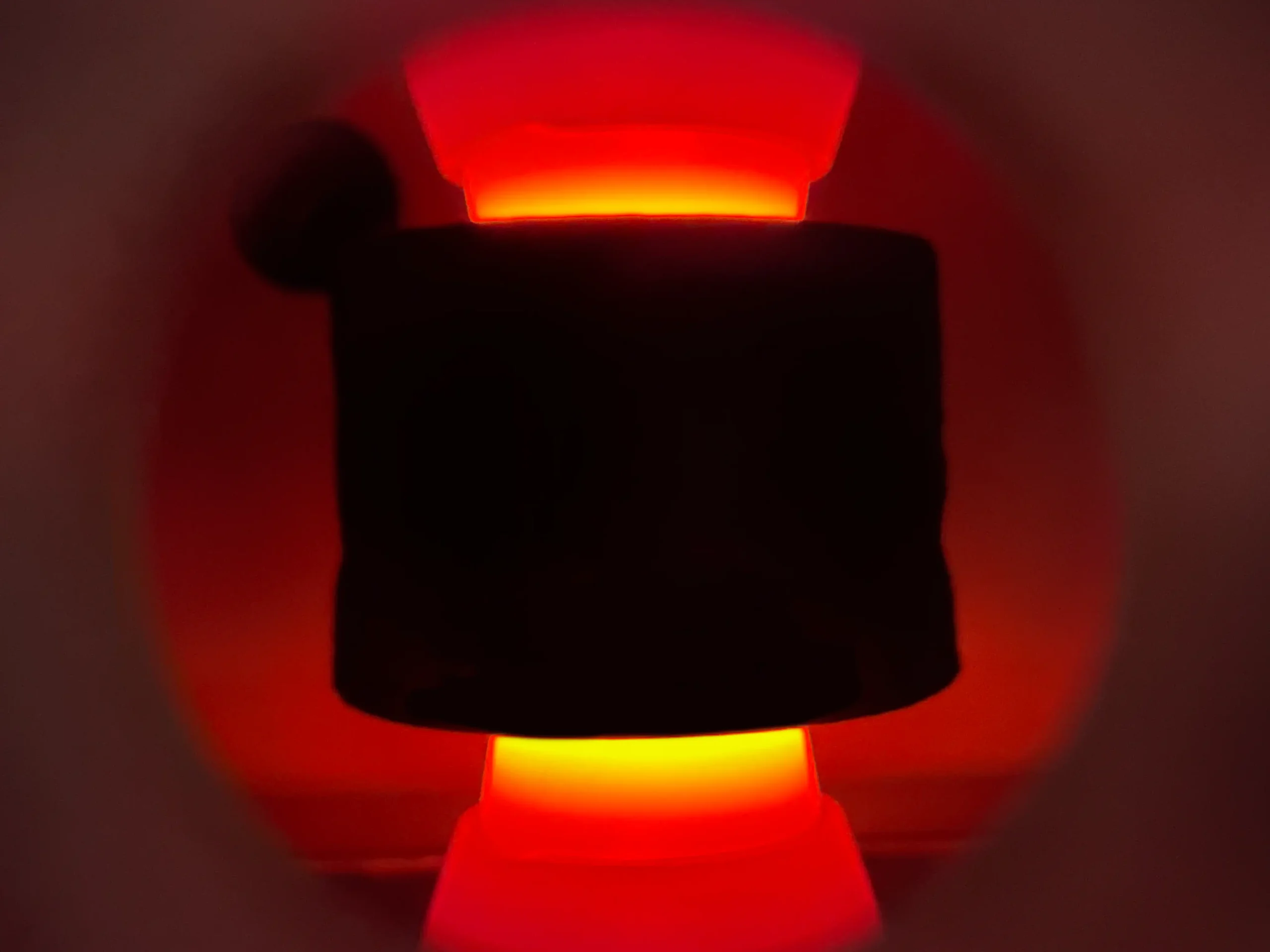Introduction
Field-Assisted Sintering Technology (FAST), also known as Spark Plasma Sintering (SPS), is transforming the production of high-performance materials. Ti-6Al-4V, a titanium alloy highly regarded for its excellent strength-to-weight ratio, corrosion resistance, and biocompatibility, is one of the key materials benefiting from this advanced manufacturing technique. This article examines the unique attributes, limitations, and applications of FAST sintering for Ti-6Al-4V components.
What is FAST Sintering?
FAST sintering is a powder consolidation method that employs simultaneous application of high temperatures and uniaxial or biaxial pressure while passing an electric current directly through the material or tooling. The process achieves rapid densification by enabling heating rates of up to 1000°C/min, significantly faster than conventional sintering methods.
“FAST sintering involves controlled electric currents passing through the compact, enabling precise temperature regulation and significantly shortening the sintering cycle” (Linde Gas, 2011, p. 8).
Key Features of FAST
- Rapid Densification: Achieves near-full density while minimizing grain growth.
- Controlled Microstructure: Facilitates precise grain size control, essential for optimizing material properties.
- Energy Efficiency: Short processing times lead to lower energy consumption.
However, “the uniaxial or biaxial pressing used in FAST limits its capability to produce only flat components with uniform wall thickness, restricting its suitability for complex geometries” (Hagen Symposium, 2011, p. 4).
Advantages of FAST Sintering for Ti-6Al-4V
Enhanced Mechanical Properties
FAST sintering produces fine-grained microstructures, enhancing the strength, fatigue resistance, and overall performance of Ti-6Al-4V, especially in aerospace and biomedical applications.
“The microstructure control achieved in FAST is particularly critical for enhancing fatigue resistance in high-performance titanium alloys” (ASM International, 1991, p. 423).
Reduced Processing Time
Unlike traditional methods that may take hours, FAST sintering achieves desired densification within minutes.
“The rapid heating and sintering rates enable unparalleled production speeds, which are crucial for meeting the demands of modern industries” (Linde Gas, 2011, p. 12).
Oxidation Prevention
Processing in vacuum or inert gas atmospheres minimizes oxidation risks, preserving the alloy’s intrinsic properties.
“Maintaining a controlled atmosphere during FAST sintering is key to preventing contamination and ensuring the mechanical integrity of the material” (Hagen Symposium, 2011, p. 6).
FAST Sintering Process for Ti-6Al-4V
1. Powder Preparation
High-purity Ti-6Al-4V powders are prepared, often with additives to enhance sintering behavior.
“Particle size distribution plays a critical role in determining the densification kinetics and final properties of sintered components” (SpringerLink, n.d., p. 9).
2. Tooling and Setup
The powder is loaded into conductive dies for uniaxial or biaxial pressing, which facilitates uniform heating and pressure application.
3. Sintering Parameters
- Temperature: Typically 900°C–1200°C.
- Pressure: Up to 50 MPa, applied uniaxially or biaxially.
- Electric Current: Generates Joule heating, densifying the powder efficiently.
“Joule heating induced by controlled electric current distribution enables precise heating and densification” (Linde Gas, 2011, p. 10).
4. Post-Sintering Treatments
Post-sintering treatments are essential to refine the mechanical properties and achieve the required final geometry and tolerances for Ti-6Al-4V components. These steps typically include:
- Solution Treatment: Dissolves precipitates and homogenizes the alloy’s microstructure.
- Rough Machining: Removes excess material and achieves a preliminary shape.
- Aging: Enhances strength and hardness by promoting precipitation hardening.
- Fine Machining: Achieves precise dimensional and surface finish requirements.
Additionally, stress relieving in a high vacuum furnace may be necessary between machining steps. The need for stress relief depends on the extent of machining and the precision required for the final component. This step helps mitigate residual stresses, ensuring dimensional stability and improved fatigue resistance.
“Post-processing steps, including solution treatment, aging, and stress relief, are critical to meeting stringent mechanical and dimensional requirements in applications like aerospace and medical implants” (ASM International, 1991, p. 430).
Applications of FAST Sintered Ti-6Al-4V Components
Aerospace
The material’s strength-to-weight ratio makes it ideal for turbine blades and structural components.
“Aerospace applications demand materials that are not only lightweight but also exhibit high fatigue resistance, making Ti-6Al-4V an ideal choice” (ASM International, 1991, p. 450).
Biomedical Devices
FAST sintering is used to produce orthopedic and dental implants with excellent biocompatibility and tailored mechanical properties.
“The ability to control porosity and surface features in Ti-6Al-4V through FAST makes it a preferred method for biomedical devices” (SpringerLink, n.d., p. 14).
Automotive
Lightweight, high-strength parts such as suspension components and engine elements benefit from FAST’s rapid processing capabilities.
“The ability to process Ti-6Al-4V in short cycles makes it highly suitable for automotive components requiring rapid production” (Hagen Symposium, 2011, p. 7).
Challenges and Limitations
FAST sintering is limited to producing flat, uniform-thickness components due to its reliance on uniaxial or biaxial pressing. This limitation restricts its use in applications requiring complex geometries.
“Despite its advantages, the geometric limitations of FAST remain a challenge for applications demanding complex designs” (Hagen Symposium, 2011, p. 10).
Conclusion
FAST sintering has emerged as a revolutionary technology for the rapid and efficient production of high-performance materials like Ti-6Al-4V. While its applications are limited by geometry constraints, it excels at producing high-quality blanks or near-net shape components. These blanks can be further processed into final shapes using subtractive manufacturing methods, such as machining or grinding, enabling manufacturers to achieve desired geometries with minimal material waste. Continued advancements in process control and hybrid manufacturing approaches promise to further extend its capabilities and adoption.
References
- ASM International. (1991). Heat Treating. ASM Handbook, Vol. 4.
- Hagen Symposium Reports. (2011). Advancements in PM technologies. Retrieved from http://www.ipmd.net/articles/001085.html.
- Linde Gas. (2011). Sintering atmospheres for metal components. Retrieved from https://www.linde-gas.com/.
- SpringerLink. (n.d.). Influence of sintering parameters on Ti-6Al-4V properties. Retrieved from https://link.springer.com/article/10.1007/s10853-023-08884-8.
- SpringerLink. (n.d.). Role of powder size in FAST sintering of Ti alloys. Retrieved from https://www.mdpi.com/2079-6412/15/1/8.





